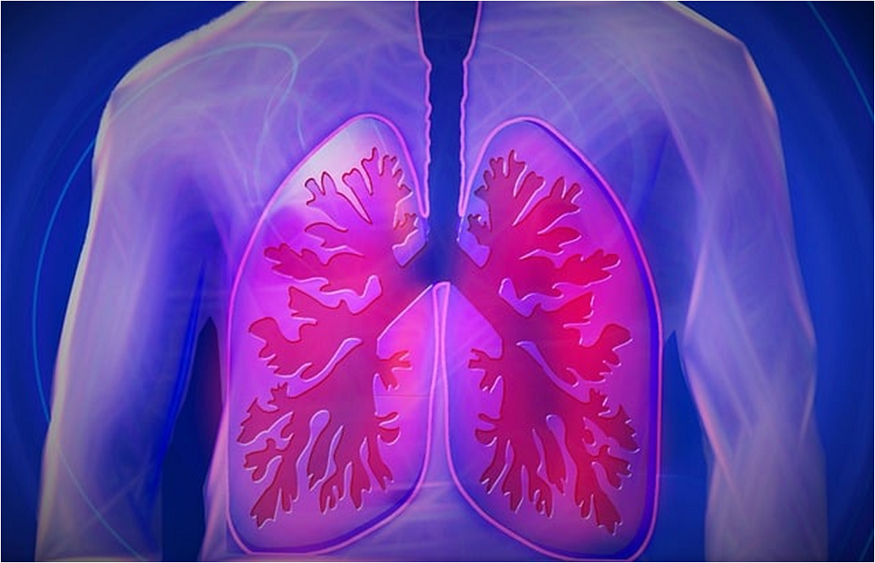The human body features a massive number of organs that are tasked with performing certain specific functions on a regular basis. Without the functionalities that they deliver, life wouldn’t have been possible, and as it turns out, the lungs are some of the most important ones out there. As far as the functions of lungs are concerned, they are the ones that fuse the oxygen that is present in the airwith the RBCs that flow in our system.
The animal kingdom can be divided into several vast categories and sub-categories, but in most cases, the lungs are used as the primary respiratory organs in the higher form of animals. In humans, these are available as a pair and is located in the thoracic cavity, and are enclosed within the ribcage for extensive protection and positioning.
As far as the structure of lungs is concerned, they are primarily conical in shape, but you would be surprised to learn that both pairs aren’t identical to earn other, with the right lung being slightly heavier than the left lung. The lung pairs are carefully enclosed in the pleurae, or the pleural cavity as some might want to refer to it. This cavity is filled with pleural fluid, and since the lungs are subjected to a great deal of friction in their regular course of action, this fluid acts as the lubricant within which the movement takes place.
An important component that enables the functions of lungs is the wall of muscle known as the diaphragm. Present just below the lungs, they aren’t usually counted within the structure of lungs, but it is their constant contraction and expansion that enables the lungs to function the way in which they are meant to.
What lies on the inside?
If you are to study the cut-away section of a human heart, you will see that there are numerous spherical nodules that seem to be hanging from the roots of a tree. These structures are referred to as the alveoli or the air sacs. These structures are core parts of the lung parenchyma, and on average, they make up about 90% of the total volume of the lungs.
Why are they important? Well, it is this structure of lungs that acts as the prime component that facilitates the exchange of gases between the external environment and human blood. Without these structures, lungs would be practically useless for the most part.
The primary functions of lungs.
Just as the case is with any other organ, the lungs are meant to serve a specific set of roles as well. Let us take a look at some of the primary ones there are:
- Exchange of Gases- The central functionality of the lungs lies in their role as the organ that deals with the exchange of gases, namely, oxygen and carbon dioxide. It is the alveoli that do this heavy lifting, and the movement that is witnessed is facilitated by the intercostal muscles and the diaphragm.
- Defensive properties- The lungs feature a certain amount of goblet cells, and it is these cells that are tasked with creating mucus that protects our respiratory systems from foreign microbes and contaminations.
- Maintains blood pressure and blood freshness- The renin-angiotensin complex helps maintain blood pressure across the body, and as the lungs are a critical part of this entire system, they help with the process of regulating blood pressure as well. Moreover, since the lungs are tasked with the removal of carbon dioxide from the bloodstream, optimum acid-base homeostasis is maintained as well.
As the aforementioned list exhibits, there’s no single importance of lungs that we can zero down on, but rather, a collective of different roles and functions. As a result, it is important to keep them in top working order, but just as with every other organ out there, there are several lung ailments and infections as well. Now, let us take a look at some of the infections that we face, and the top lung infection symptoms there are.
Lung infections and ailments.
Human lungs are susceptible to multiple illnesses, and while some may directly affect the lungs, others can be due to certain spillover effects as well. There are a number of glaring lung infection symptoms that can help us understand the issues that are being caused, and what the potential treatments can be.
- Asthma- This is arguably the most common lung ailment that we encounter, and it is mainly caused by the inflammation of the airways, thereby leading to difficulties in breathing and spasms. While genetics do play a role in generating asthma, external factors like pollution are to blame as well. Some of the main asthma lung infection symptoms are coughing, breathlessness, wheezing, etc.
- COPD- Chronic Obstructive Pulmonary Disorder is a potentially-fatal respiratory condition that affects the human lung. Excessive coughing and shortness of breath are some of the main symptoms that are related to this disease, with factors like pollution and genetics playing a role in causing COPD.
- Pulmonary Hypoplasia- This is a congenital lung-related medical condition that involves wrongly orunderdeveloped alveoli, bronchioles, etc.
Final take:
Our lungs are one of the central organs that makes life possible, and there are no two ways about it. The importance of lungs in human physiology cannot be discounted in any manner whatsoever, and to that end, it is essential that we exercise proper care to keep them in optimal working order.
If you feel you need see a doctor for your heels, visit a super-speciality hospital today!

